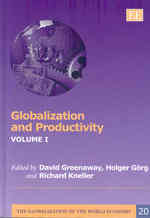Full Description
How can memory be mobilized for social justice? How can images and monuments counter public forgetting? And how can inherited family and cultural traumas be channeled in productive ways?
In this deeply personal work, acclaimed art historian Dora Apel examines how memorials, photographs, artworks, and autobiographical stories can be used to fuel a process of "unforgetting"—reinterpreting the past by recalling the events, people, perspectives, and feelings that get excluded from conventional histories. The ten essays in Calling Memory into Place feature explorations of the controversy over a painting of Emmett Till in the Whitney Biennial and the debates about a national lynching memorial in Montgomery, Alabama. They also include personal accounts of Apel's return to the Polish town where her Holocaust survivor parents grew up, as well as the ways she found strength in her inherited trauma while enduring treatment for breast cancer.
These essays shift between the scholarly, the personal, and the visual as different modes of knowing, and explore the intersections between racism, antisemitism, and sexism, while suggesting how awareness of historical trauma is deeply inscribed on the body. By investigating the relations among place, memory, and identity, this study shines a light on the dynamic nature of memory as it crosses geography and generations.
Contents
Contents
Acknowledgments
Introduction
Part 1: Passages and Streets
1. A Memorial for Walter Benjamin
2. "Hands Up, Don't Shoot"
Part II: Memorials and Museums
3. Why We Need a National Lynching Memorial
4. "Let the World See What I Have Seen"
Part III: Hometowns and Homelands
5. Seeing What Can No Longer Be Seen
6. Borders and Walls
Part IV: Hospitals and Cemeteries
7. Sprung from the Head
8. Parallel Universes
Part V: Body and Mind
9. Reclaiming the Self
10. The Care of Others
Conclusion
Notes
Bibliography
Index





